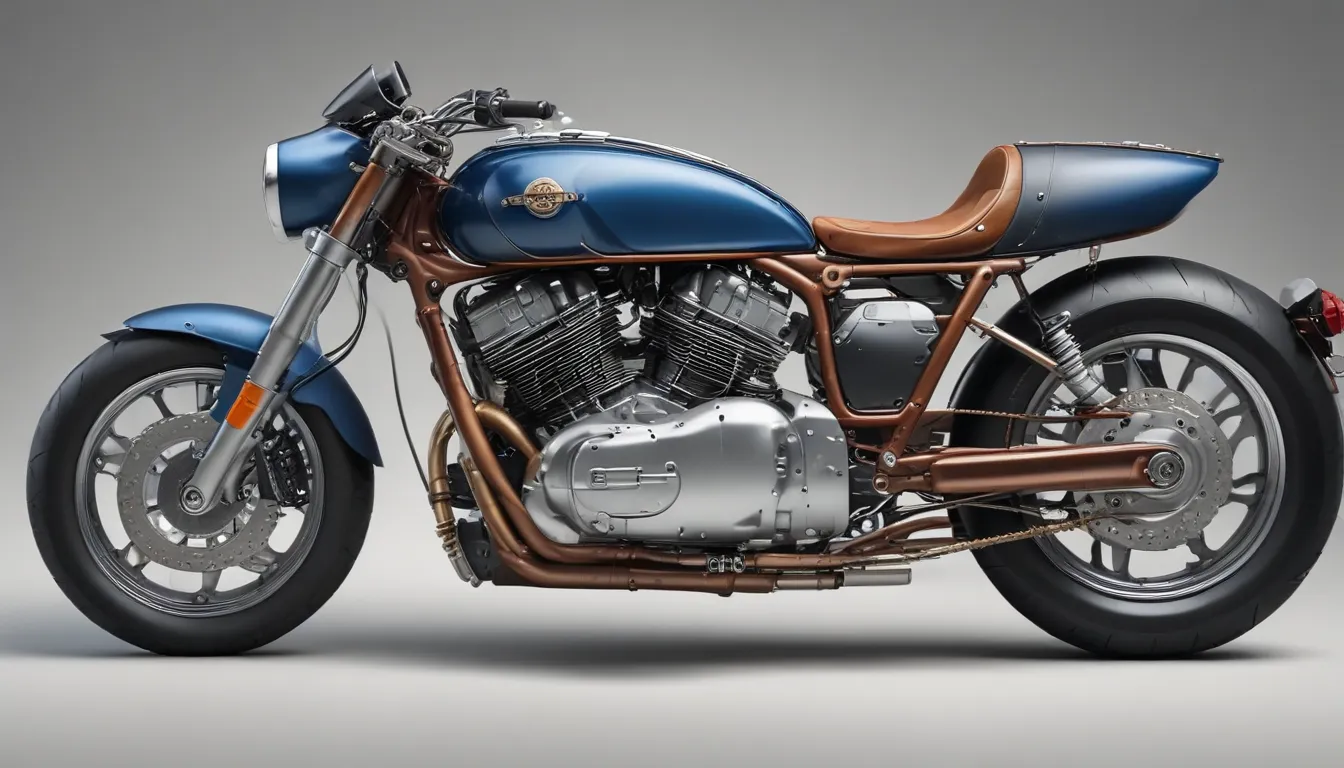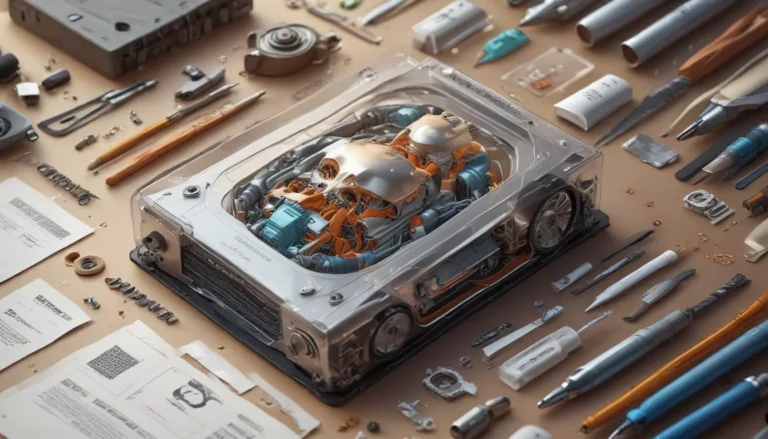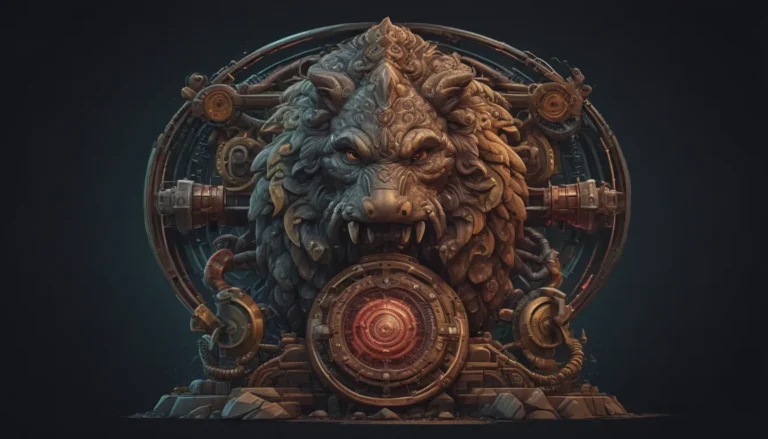A Note About Images: The images used in our articles are for illustration purposes only and may not exactly match the content. They are meant to engage readers, but the text should be relied upon for accurate information.
Are you intrigued by the captivating world of motorcycle design? Do you want to unravel the mysteries behind the evolution of these two-wheeled wonders? From the humble beginnings of motorized bicycles to the cutting-edge innovations of the present day, motorcycle design has shaped the way we perceive these machines. Join us on a journey as we explore the intricate details of motorcycle design, delving into the fusion of art and engineering that creates these moving pieces of art.
Evolution of Motorcycle Design
The history of motorcycle design is a tale of constant evolution, with each era bringing new advancements and technologies to the table. Let’s uncover some fascinating facts about the evolution of motorcycle design:
- Early motorcycles were rudimentary machines, essentially bicycles with engines attached. The transition from steam-powered to gasoline-powered engines marked a significant turning point in motorcycle design.
- The introduction of the V-twin engine revolutionized the industry, providing more power and a smoother ride. This engine layout remains a popular choice among motorcycle manufacturers to this day.
Impact of Technology on Motorcycle Design
Technological advancements have played a crucial role in shaping the modern motorcycle landscape. Let’s explore some key technological innovations that have influenced motorcycle design:
- The implementation of ABS (Anti-lock Braking System) in motorcycles has significantly improved safety by preventing wheel lock-ups during braking.
- Electronic fuel injection (EFI) has replaced carburetors, enhancing engine efficiency and performance.
- Aerodynamics have become a focal point in motorcycle design, leading to sleeker and more streamlined shapes that optimize speed and efficiency.
Materials Used in Motorcycle Design
The choice of materials in motorcycle construction is paramount to achieving the desired balance of performance, durability, and aesthetics. Here are some insights into the materials used in motorcycle design:
- Steel was initially the go-to material for motorcycle frames due to its strength and affordability. However, its weight posed challenges in terms of agility and speed.
- Aluminum emerged as a lightweight alternative to steel, offering improved performance capabilities.
- Modern high-performance motorcycles utilize materials like carbon fiber and titanium for their exceptional strength-to-weight ratios, albeit at a higher cost.
Ergonomics and Comfort
In recent years, a greater emphasis has been placed on enhancing rider comfort and ergonomics. Let’s explore some features that contribute to a more enjoyable riding experience:
- Adjustable components such as handlebars and seats allow riders to customize their riding position for optimal comfort.
- Windshields and fairings not only enhance aerodynamics but also shield riders from wind blast, reducing fatigue on long journeys.
Safety Innovations in Motorcycle Design
Safety is a top priority in motorcycle design, leading to the incorporation of innovative features to protect riders on the road. Here are some safety innovations to be aware of:
- Traction control systems help prevent rear wheel spinouts, especially on slippery surfaces.
- LED lighting has replaced traditional bulbs, improving visibility for both riders and other road users.
Environmental Considerations
In response to growing environmental concerns, motorcycle manufacturers are exploring sustainable options to reduce their carbon footprint. Here are some environmentally friendly initiatives in motorcycle design:
- The rise of electric motorcycles offers zero emissions and lower operating costs, making them an eco-conscious choice for riders.
- Lightweight materials not only enhance performance but also improve fuel efficiency, reducing environmental impact.
The Future of Motorcycle Design
Looking ahead, the future of motorcycle design promises exciting innovations in sustainability, safety, and connectivity. Here’s a glimpse into what the future holds for motorcycle enthusiasts:
- Autonomous technology is on the horizon, offering features like collision avoidance systems to enhance rider safety.
- Connectivity features such as GPS and Bluetooth are becoming standard, allowing riders to stay connected while on the move.
The Ever-Evolving World of Motorcycle Design
As we reflect on the evolution of motorcycle design, it becomes evident that these machines are more than just modes of transportation—they are embodiments of creativity, precision, and technological prowess. From classic designs to cutting-edge innovations, each motorcycle tells a unique story of craftsmanship and innovation. As we look towards the future, the possibilities for motorcycle design are endless, promising thrilling developments that will continue to captivate riders and enthusiasts alike. Join us on this exhilarating ride into the future of motorcycle design, where art and engineering converge to create the ultimate riding experience. Get ready to embrace the journey ahead, as the world of motorcycle design unfolds before your eyes.
Thank you for taking the time to explore the fascinating world of motorcycle design with us. Your curiosity and appreciation for these machines inspire us to continue sharing valuable insights and information. We are committed to upholding the highest standards of accuracy and authenticity in our content, ensuring that you receive trustworthy and engaging facts about the world of motorcycles. Stay tuned for more exciting updates and discoveries as we delve deeper into the realm of motorcycle design. Ride on, explore, and discover the beauty of these moving pieces of art!






